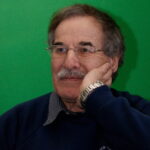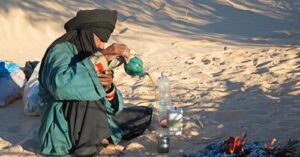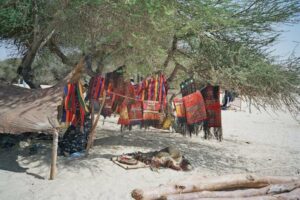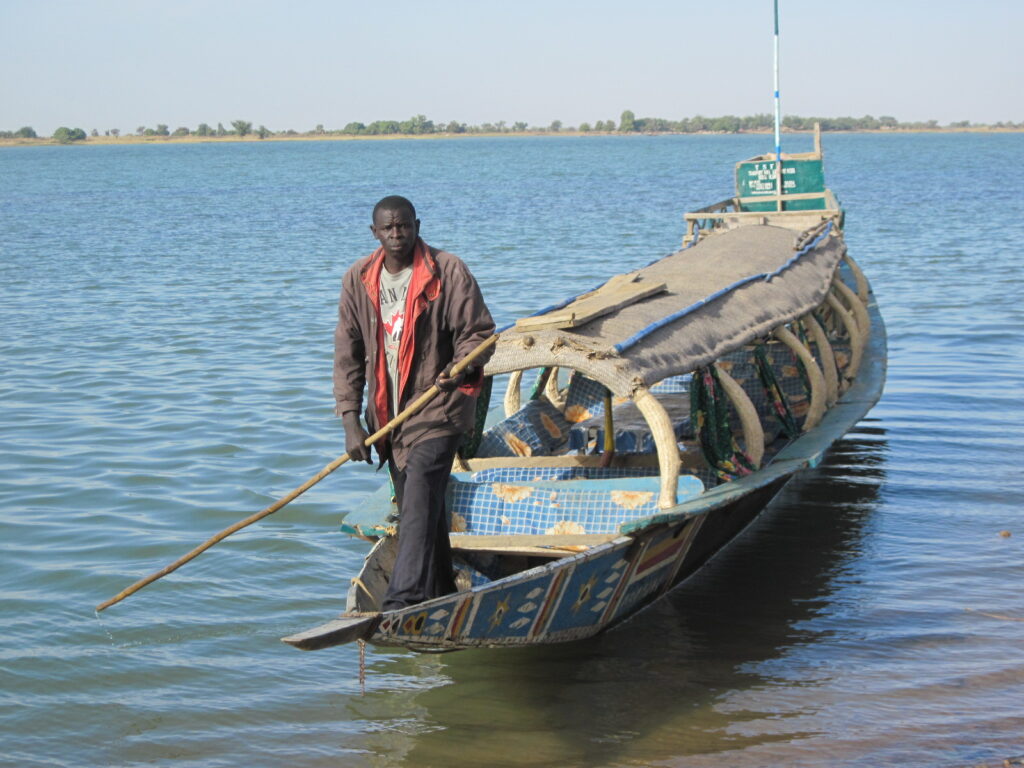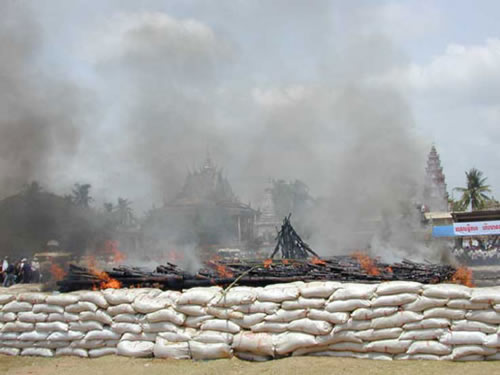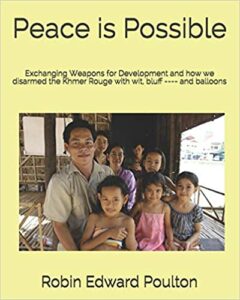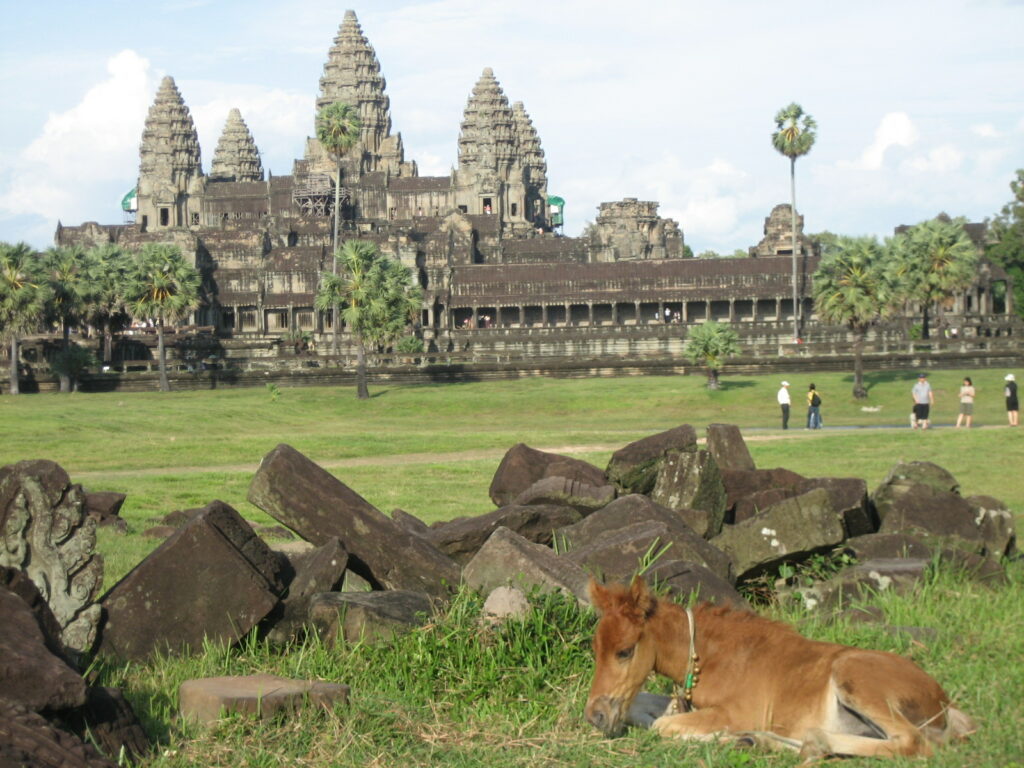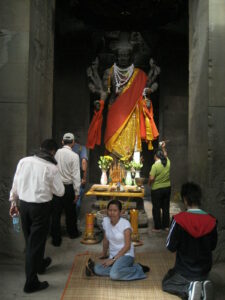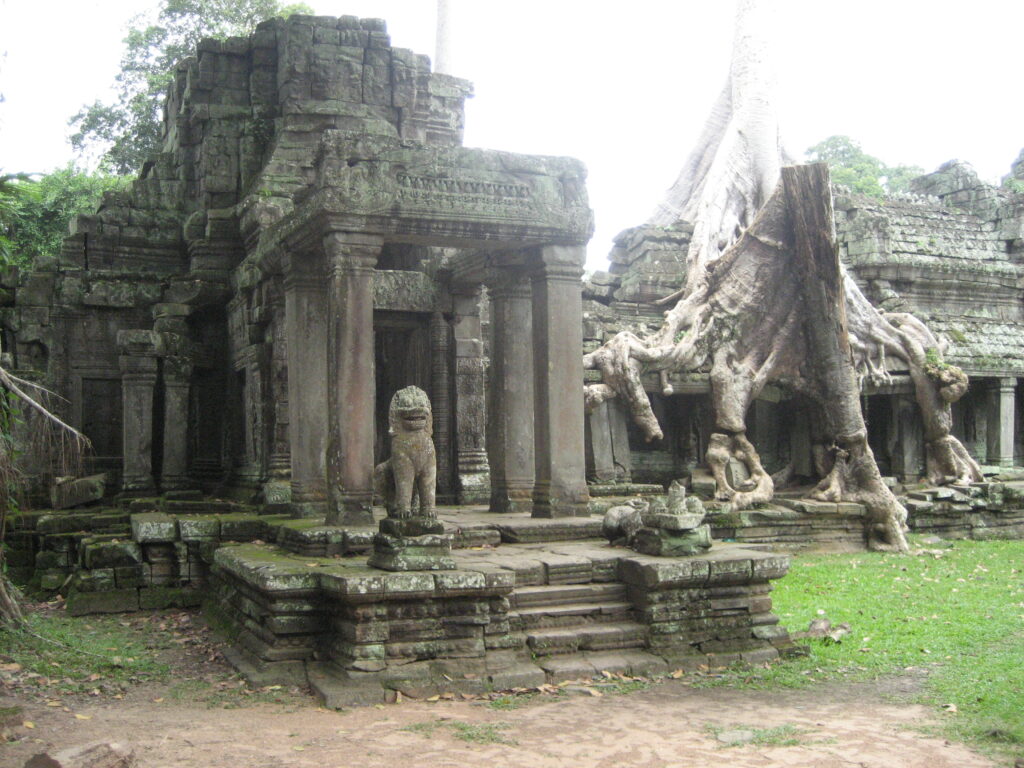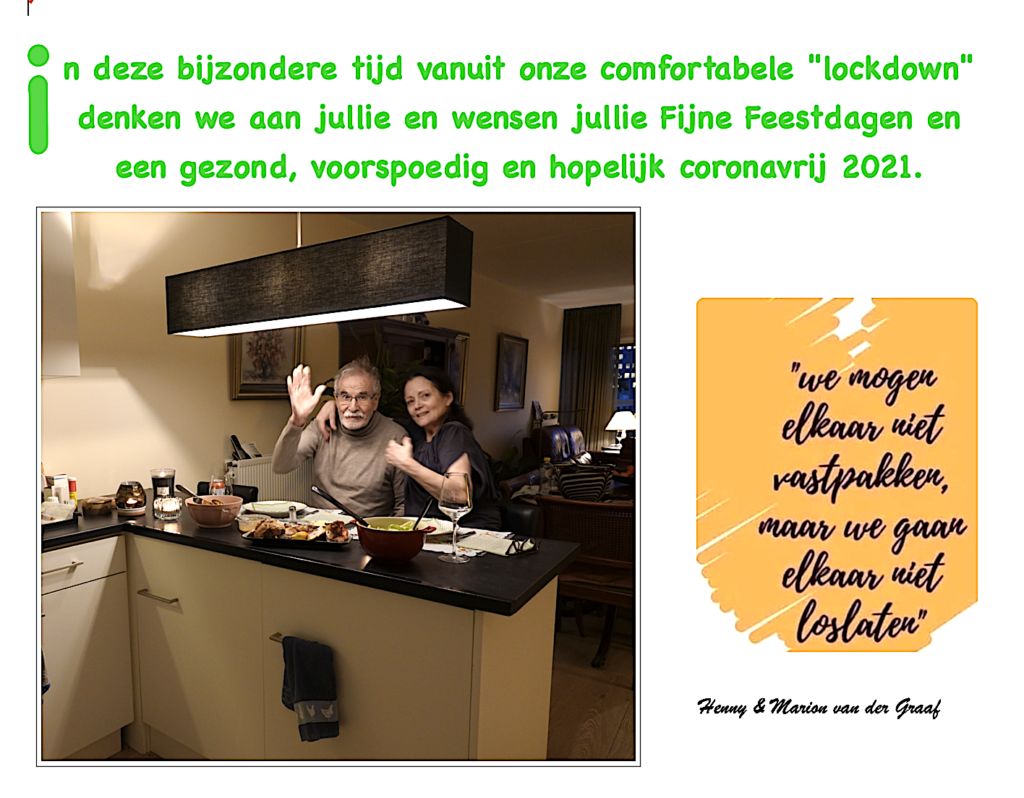Remembering My Friend General Hendrik Van Der Graaf, Famous UN Peacemaker Who Died on 10 Mar 2021
OBITUARIES, 10 May 2021
Robin Edward Poulton, Ph.D. – TRANSCEND Media Service
UNIDIR’s General Henny Invented “Weapons-for-Development”
In Albania with UNDP, in Mali with the National Small Arms Commission, in Cambodia with the European Union and finally in the Balkans with SEESAC, General Henny van der Graaf created a system for persuading people with firearms to adopt micro-disarmament in exchange for peace and development. The exchange model varies according to the urban, rural and social context, but the idea has become a standard part of the disarmament toolbox. General Henny, former member of the Board of UNIDIR – the United Nations Institute for Disarmament Research in Geneva – died March 10th 2021 at the age of 88, in his hometown of Eindhoven.
Henny was a leader in United Nations and European peace and disarmament, particularly in reducing the proliferation and illicit trafficking of small arms and light weapons (SALW). SALW are weapons and explosives that can be carried and used by just one or two people. These are the real weapons of mass-destruction, for they kill tens of thousands of people every year. Because we are talking about small arms, the United Nations coined the name micro-disarmament to describe their management or removal.
Security First
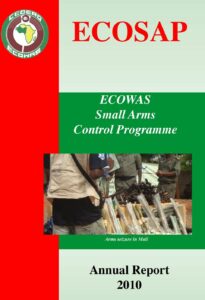 I first met Henny when he travelled through West Africa in 1994 and 1995 as Deputy Director of a UN mission led by William Eteki-Mbmoua of Cameroun – former Secretary-General of the Organisation for African Unity (OAU) – to investigate the problem of the circulation of illicit small arms in Mali, Niger, Ivory Coast, Senegal, Mauritania, Chad and Burkina Faso.
I first met Henny when he travelled through West Africa in 1994 and 1995 as Deputy Director of a UN mission led by William Eteki-Mbmoua of Cameroun – former Secretary-General of the Organisation for African Unity (OAU) – to investigate the problem of the circulation of illicit small arms in Mali, Niger, Ivory Coast, Senegal, Mauritania, Chad and Burkina Faso.
This team formulated the UN doctrine known as Security First.
Security First dictates that a reasonable and proportional amount of development spending could (should) be devoted to ensuring adequate security. Minimum security levels are necessary in order for humanitarian projects to take place at all. In the 1990s, many agencies were still refusing to spend any ‘development’ money on security issues. That has changed.
One of the earliest results of this innovation was the creation by the UNDP of a West African network of micro-disarmament National Commissions, with a coordinating unit based in Bamako. ECOSAP became the ECOWAS programme for implementing the regional moratorium (later a legally-binding Convention) against the proliferation of small arms and light weapons in West Africa.
As weapons proliferated during the 1990s, and mobile armed fighters seeking profit and power moved between Sierra Leone and Liberia, and on through Nigeria to Central Africa or to Sudan, it became increasingly clear that security was a ‘development cost’ – something that became obvious as more and more humanitarian workers were killed.
This trend started with the deliberate assassination in December 1996 of six ICRC medical workers at the ICRC Hospital of Novye Atagi, in Chechnya. The Red Cross flag no longer affords automatic protection to doctors or clinics. American policies in Afghanistan and Iraq increased the dangers after 2001, as US troops involved themselves in development work through the failed Provincial Reconstruction Teams (PRT) strategy. With the difference between soldiers and humanitarian being blurred, the work of civil society became more dangerous. Security First is now essential.
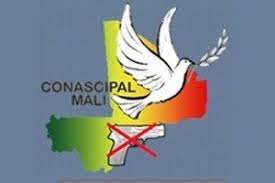
Created in 1999, the Coalition Nationale de la Société Civile pour la Paix et la Lutte contre la Prolifération des Armes Légères (CONASCIPAL) is an umbrella group of Malian civil society groups, religious, women’s, youth and artisan groups working with the NatCom to reduce SALW.
Henny in Africa
I met Henny again in Timbuktu. On March 27th 1996, General Henny had been sent by the Secretary-General of the United Nations to provide international supervision for the disarmament of armed rebel groups in Northern Mali. We were witnesses to the end of their rebellion, the formal dissolution of the armed movements and the physical destruction of their weapons in a Flame of Peace.
The Peace of Timbuktu became a symbol of disarmament and peace-building, an African success story. General Henny officiated at the very first Flame of Peace. While steel shredding is technically more efficient, the public act of burning weapons in a Flame of Peace acts as a powerful symbol of peace making. It has been used in several parts of the world. Some experts criticize burning as inefficient, or polluting; but they miss the point that the primary purpose of a Flame of Peace is to build public confidence in PEACE. The destruction of weapons is only the secondary purpose, although that is also valuable.
The first Flame of Peace was in Timbuktu, under General Henny’s supervision, with the participation of two presidents: Mali’s Alpha Oumar Konaré, and Ghana’s Jerry Rawlings who represented ECOWAS in Timbuktu. Other senior personalities there included Ellen Johnson-Sirleaf, head of UNDP Africa and a future president of Liberia; Tore Rose of UNDP, Ivor Fung of the UN Secretariat, and Prvoslav Davinic, Director of the UN’s Centre for Disarmament Affairs, who later – as Serbia’s defence minister – would work with Henny in Belgrade. General Hendrik van der Graaf had become an international figure himself, meeting with presidents and advising ministers.
Henny was rubbing shoulders with the powerful, so that he could influence them to support his work on behalf of peace for the powerless.
Retired from the Royal Netherlands Army and now a civilian, Henny had to seek special permission to wear his general’s uniform in Timbuktu. After a popular revolution in 1990-91 overthrew 23 years of military dictatorship and corruption, Mali’s generals had all been forced to retire. When Mali’s first democratically-elected president Alpha Oumar Konaré took power in June 1992, his first act was promoting to the rank of general, colonel Amadou Toumani Touré who had overseen Mali’s successful transition to democracy. Mali now had one army general.
When General Henny arrived to supervise Malian army officers preparing the Flame of Peace that would consume 3000 rebel firearms, he became the second general in the country. It mattered to Mali’s colonels, that Henny appeared in his uniform as a general. The whole story of Henny’s contributions to Malian peace is described in the UNIDIR book I wrote in 1998 with Ibrahim Ag Youssouf, A Peace of Timbuktu: Democratic Governance, Development and African Peacemaking with a preface by Kofi Annan.
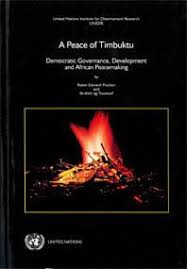 Earlier during the peace process, the head of UNDP in Mali, Tore Rose, had introduced me to Sven Lodegaard, then the Director of UNIDIR in Geneva. My wife Michelle had just moved to head the Geneva office of her international child development organisation, and I became a Research Fellow at the United Nations Institute for Disarmament Research. I discovered that Henny was a member of the UNIDIR Board, and so we were re-united in Geneva, and we became partners in micro-disarmament.
Earlier during the peace process, the head of UNDP in Mali, Tore Rose, had introduced me to Sven Lodegaard, then the Director of UNIDIR in Geneva. My wife Michelle had just moved to head the Geneva office of her international child development organisation, and I became a Research Fellow at the United Nations Institute for Disarmament Research. I discovered that Henny was a member of the UNIDIR Board, and so we were re-united in Geneva, and we became partners in micro-disarmament.
We traveled together across the vast desert lands of western Mali, skirting the frontiers of Mauritania (and possibly crossing them inadvertently, but how could anyone tell?), sleeping under the stars and meeting village Elders to discuss the surrender of illegal weapons left over from the rebellion. We were supporting Mali’s “exchanging weapons for development” experiment, traveling with Colonel (later General) Sirakoro Sangaré, head of Mali’s National Commission on SALW, together with the elected representative for Diré and local Tuareg chief Nock Ag Athia, an enthusiastic supporter of destroying firearms and explosives.
I joked to Henny that the name of General van der Graaf was causing panicked migrations of sheep and goats: for in every village and every nomad camp, a goat or a sheep was killed in Henny’s honour. After meat, the tea ceremony, with three glasses of bitter and sweet green tea. I had been working in North Mali since 1980, so I was used to this regime, living in a Sahelian landscape where meat is everywhere and vegetables are nowhere. Henny found it difficult. The distances were long, on hot desert tracks in a bone-shaking 4WD vehicle.
One evening Henny was exhausted – though he was loathe to admit it – and I came to the rescue. I always carried a tin of Quaker Oats, which can be mixed with water or milk and removes hunger. That evening as the sun was setting, Henny lay on a mat while I fixed his mosquito net to the branch of an acacia tree, and cleared the sand of hard objects. While he relaxed on his mattress under the net, I mixed him a bowl of Quaker Oats with condensed milk and honey. Henny generally had little interest in food ….. but that evening, he felt as if he was eating Ambrosia, the Food of the Gods. Comfort food. Henny slept like a baby. Next morning he was back in the form that Henny expected of himself, marching like a general who had trained commandos.
Henny van der Graaf, Tore Rose, Ibrahim Ag Youssouf and Ivor Fung were a UN peace-and-disarmament team working with Mali’s president Konaré to build stability in West Africa. They created the ECOWAS disarmament programme, which Henny and I supported from UNIDIR by mobilizing West African civil society. Ivor Fung worked from UNREC in Lomé, and Tore Rose provided funding through the UNDP. The result was the world’s first regional Moratorium on Small Arms and Light Weapons signed in 1998, which later became an internationally binding ECOWAS Convention. This was a FIRST, and it led in due course to the First United Nations Conference on SALW in 2001 in New York, where Henny’s disarmament work in Mali and in Cambodia was highlighted in two films.
All that seems a long time ago! NATO’s destruction of Libya and Iraq released so many SALW, that the very concept of ‘disarmament’ in West Africa now seems irrelevant. These days in North Mali, the Kalashnikov is considered a weapon for women and boys. Men carry rocket launchers, or worse. It is very sad.
Henny in Europe
After retiring from the army, Henny directed the Centre for Arms Control and Verification at the Technical University of Eindhoven. He was a popular lecturer across the Netherlands, and his reputation as an expert in disarmament and reconversion filtered up through the political spheres to the European Union. That is how he came to be a Special Advisor to the EU in Cambodia (as we shall discuss below) and also to the Secretary General of the United Nations, who appointed him as a Board Member of UNIDIR in Geneva.
I remember Henny telling me: “Since I retired, I have had much more fun than when I was in the army! We spent thirty years training soldiers to fight an enemy who never came. NATO faced off against Russia, and we just waited. Now I can do useful things, have fun and make a practical contribution to peace.”
Henny went off the Albania with UNDP, and later to Belgrade to practise the art of disarmament through Exchanging Weapons for …. Well, Henny and his disciples proved that weapons can be offered in exchange for a lot of different things including community development projects, wells, seeds for planting, farm animals for restocking, agricultural tools, artisan and craft skills, commercial vegetable farms, lottery tickets to win a limousine …. Henny, and later Adrian Wilkinson, experimented these ideas in the Balkans – as well as forms of weapon management, which seeks to register legal weapons and reduce illegal weapons – as they led SEESAC, the South Eastern and Eastern Europe Clearinghouse for the Control of Small Arms and Light Weapons.
SEESAC was launched in May 2002, with Henny at the helm and a mandate from the UNDP and the Stability Pact for South East Europe (later succeeded by the Regional Cooperation Council – RCC) to stop the flow and availability of SALW and to support socio-economic conditions for peace and development in South Eastern and Eastern Europe. SEESAC still exists twenty years later, and still makes contributions to practical and theoretical peace in the Balkans.
The uncontrolled proliferation and illicit trafficking of small arms and light weapons (SALW) was a serious problem in South Eastern and Eastern Europe after the fall of the Berlin Wall and the release of Albania’s vast stock of citizen army weapons and munitions onto the illegal market. The easy availability of Kalashnikovs and ammunition fuelled crime and insecurity, exacerbating violence across Europe and undermining post conflict peace-building.
In January 2005 Henny became co-chair of the SEE Stability Pact/NATO Conversion Initiative, coordinating retraining of demobilized military personnel and converting redundant military bases and sites for civilian use – a direct result of his practical and academic work in Eindhoven and in SEESAC.
Henny had plenty of good stories to tell from his military days, where he was an infantry officer and a commando. I remember him recounting his conversation with the Dutch sergeant who had organized a Guard of Honour for the visit to Den Haag of the King of Denmark. “I know it is unfair,” Henny told his sergeant. “You did all the work and got the troops ready, and yet I am the one who received a medal from the Royal House of Denmark. Life is unfair: but you are a sergeant and I am a captain. That is how life works!”
Henny in Asia
It was thanks to his high reputation in Europe and the United Nations, that in 1999 Henny was appointed Special Advisor to the European Union to facilitate disarmament in Cambodia: a tribute to his reputation as ‘The World’s Most Famous Micro-Disarmament Expert.’ Henny called me by phone or – as he would have put it – he ‘paid me a phone call,’ saying “Robin, I have this EU disarmament contract and now you must help me to implement it.”
I have never known another project organized in this way, but it was a great success. The EU Council (not the EU Commission) had given a personal contract to Henny, with half a million euros to set up EU-ASAC: EU Assistance for controlling Small Arms in Cambodia. It worked brilliantly, precisely because Henny had the flexibility to do what he needed to do.
And thus it was that a team consisting of the Dutch general Henny van der Graaf, the Irish lawyer Dennis Brennan, and the British community development manager Robin Poulton, flew into the beautiful country of Cambodia.
The detailed project outline had been cleverly designed by a peace studies professor named Owen Greene. The budget fitted the initial activities to be carried out. Looking back, we know now that the EU-ASAC project became the world’s most successful disarmament project, thanks to Henny and to his successor David de Beer.
We had a lot of fun in Cambodia, while traveling in dangerous places and playing high-level politics with former war criminals, out-of-control colonels, bands of Khmer Rouge soldiers, arms smugglers and gangs of criminal kidnappers. Not forgetting that Cambodia had the world’s highest concentration of land mines and unexploded ordnance….and the Khmer Rouge were still fighting on the western frontier around Pailin as we began our disarmament work with Khmer Rouge villagers in the eastern border province of Kracheh.
Between 2000 and 2006, EU-ASAC initiated the successful destruction by the Royal Cambodian Government of nearly 250,000 weapons. If these firearms had been smuggled to rebels in Sri Lanka or Philippines, a lot more people would have died. We knew that illegal weapons were being exported to the Tamil Tigers though the Cambodian port of Sihanoukville, while reconditioned Khmer weapons were reaching rebels in Mindanao through Vietnam. The EU-ASAC programme was able to block both these routes.
We coined a new Khmer proverb on which to hang our disarmament story: “The illegal weapon does not know the name of its owner; it knows only the name of its next victim.”
I am happy that I was able to record and honour the work of Henny, David and the EU-ASAC team with a small book that tells a part of the story – it focuses especially on Henny’s Exchanging Weapons for Developments strategy, which I implemented in Cambodia.
There are so many great memories! I remember sitting in Henny’s office in Phnom Penh, laughing as he pointed to a chart in bright primary colours on the wall behind him. “Colonel Perigaud has produced this chart to show me the progress with his weapons storage project,” Henny chuckled: “I know it is in bright colours, and I haven’t the heart to tell him that I am colour blind: it all looks gray to me.”
We often went shopping in the Phnom Penh market. I bought balloons for my village meetings, cotton shirts and krama cotton scarves in bright colours. “Tell me, Robin,” cried Henny: “What colour are these trousers? They are only $10 and I think I want to pay them.”
“They are a pleasant military dark green,” I replied. “They will suit you very well. But I think you should try them on before you buy them. You know that a lot of Khmer have very short legs.”
The next day, in the office, Henny accosted me. “Those trousers. I tried them on last night, and they are too short. You owe me $10.”
I laughed hugely. I think it was meant as a joke. Who knows? Henny often used to say: “I am a Dutch. We Dutch are always asking too much and giving too little.”
We worked hard, we worked successfully, and we laughed a lot. We did not always agree, for I am a planner. Henny would often brush aside my plans: “Robin, this is too academic. I am a soldier: I shoot first, then I aim.”
But Henny created a good atmosphere, leading a great team and working well with constructive interior ministry partners in the very agreeable Cambodian cultural environment. We all loved Cambodia and we enjoyed the idea that we were helping to bring peace to Cambodia after thirty years of war. Dennis Brennan was our Irish lawyer; Lt Col Alain Perigaud was our French weapon storage specialist (who died a few years ago); Lt Col Adrian Sprangemeijer was our Dutch weapon and explosives destruction expert; Major Kry Vuth was my Khmer military advisor and talented disarmament artist; Dan Pisey – who was still a university student of English when she first worked for us – was the team’s intelligent and charming translator and protocol advisor; Marc van Hemelryck – a Belgian married to a Khmer lady – worked with our NGO partners; Seng Son and Chou Bonine were our field managers; Chakriya Mao was the project accountant …… others joined the team when I was no longer permanently involved …. And it was David de Beer who took over from Henny as EU Special Advisor, and turned the EU-ASAC project into a permanent success story.
Then – of course – the EU lost concentration. Officials in Brussels forgot why the project had been created in the first place: to facilitate peace, to install civilian control over the Cambodian armed forces, and to avoid Cambodia becoming a source of recycled weapons undermining peace in neighbouring countries. The EU is run by accountants, who closed down EU-ASAC after just six years. The EU’s so-called ‘project cycle’ is not related to the strategies of programmes with very different activities and objectives, but to EU accounting practices – which explains why the EU’s large expenditures have little lasting impact.
But Henny himself had enormous impact on everyone he ever met.
When Police General Ouk Kim Lek of the Interior Ministry offered him a medal, Henny responded that he already had plenty of medals. Since EU-ASAC was a team project, Henny said he would accept a medal only if all his staff were also awarded medals. He was asked for a list: and every one of us received the Order of Sahametrei (meaning ‘friendly cooperation’), including Chakriya the accountant and Rath our driver. That is an example of fine leadership. Who would not walk through a field of land mines behind such a leader as Henny van der Graaf?
The success of the Cambodian project led me to create EPES Mandala Consulting, with Henny and other friends giving lots of moral support. EPES was able to make contributions to peace with the UN and the EU until Brexit occurred, and we had to close up shop. The next generation must take over.
I am happy that I was able to recognize and celebrate Henny’s and EU-ASAC’s achievements in my small book Peace is Possible. I hope Henny enjoyed the book, and that it reminded him both of happy times past, and of successful efforts invested. It certainly must have reminded him of the major impacts he made to peace, disarmament and development in Africa, Asia and Europe.
We shall miss him a lot.
__________________________________
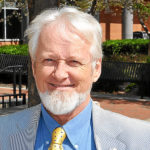 Robin Poulton, Chevalier de l’Ordre Royal du Sahametrei (Cambodia), Chevalier de l’Ordre National (Mali), is a member of the TRANSCEND Network who has been working in West African peace and development since 1980. An International Peace Consultant and founder of EPES Mandala Consulting Ltd., former Weapons-for-Development advisor to EU-ASAC, researcher with UNIDIR Geneva (United Nations Institute for Disarmament Research), School of World Studies at Virginia Commonwealth University, West Africa Research Association and elsewhere, he is author most recently of Peace Is Possible about peace building and disarmament in Cambodia with the Khmer Rouge. Website: https://robinpoulton.com/. Email: repoulton@epesmandala.com
Robin Poulton, Chevalier de l’Ordre Royal du Sahametrei (Cambodia), Chevalier de l’Ordre National (Mali), is a member of the TRANSCEND Network who has been working in West African peace and development since 1980. An International Peace Consultant and founder of EPES Mandala Consulting Ltd., former Weapons-for-Development advisor to EU-ASAC, researcher with UNIDIR Geneva (United Nations Institute for Disarmament Research), School of World Studies at Virginia Commonwealth University, West Africa Research Association and elsewhere, he is author most recently of Peace Is Possible about peace building and disarmament in Cambodia with the Khmer Rouge. Website: https://robinpoulton.com/. Email: repoulton@epesmandala.com
Tags: Biography, Obituary
This article originally appeared on Transcend Media Service (TMS) on 10 May 2021.
Anticopyright: Editorials and articles originated on TMS may be freely reprinted, disseminated, translated and used as background material, provided an acknowledgement and link to the source, TMS: Remembering My Friend General Hendrik Van Der Graaf, Famous UN Peacemaker Who Died on 10 Mar 2021, is included. Thank you.
If you enjoyed this article, please donate to TMS to join the growing list of TMS Supporters.

This work is licensed under a CC BY-NC 4.0 License.
